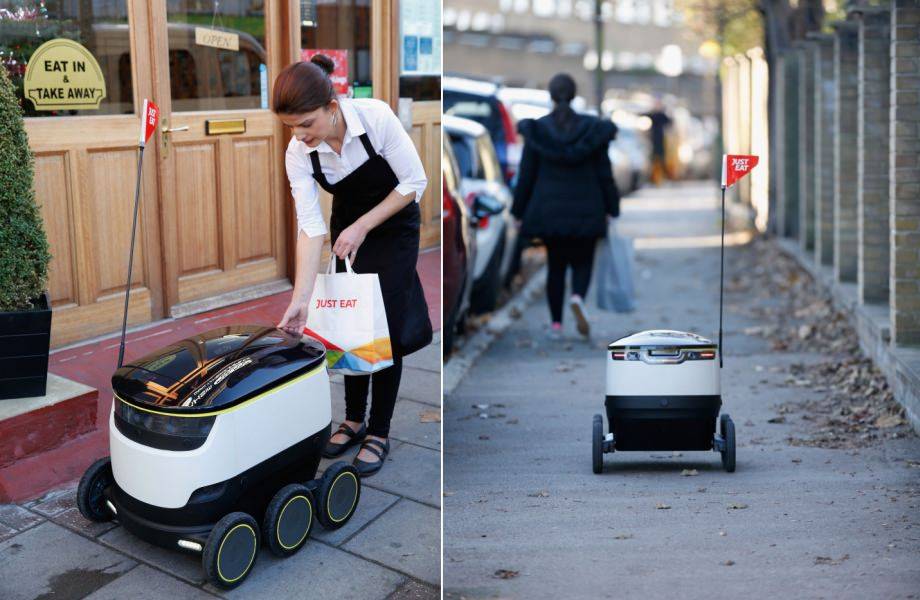
From Sci-Fi Dreams to Sidewalk Reality
The Robot Revolution: How Autonomous Delivery Bots are Changing Urban Life"
Picture this: you're sitting on your couch, craving a late-night snack, and all you have to do is open an app on your phone to summon a robot that will bring your favorite treat to your doorstep. Sounds like something out of a sci-fi movie, right? Well, it's not. Self-driving robots are revolutionizing the way we access our food, groceries, and packages. In this article, we'll explore how these robots are becoming an integral part of urban life, transforming our daily routines, and reshaping industries.
The Rise of Robot Couriers:
In many cities across the world, self-driving robots have become a familiar sight. What started as a curiosity has now evolved into a convenience that improves our daily lives. Take the United States, for example, where over a dozen college campuses have integrated delivery robots into their food services. These compact, luggage-sized bots whiz through sidewalks, while larger counterparts roam public roads, ensuring efficient and safe delivery.
Estonian-origin Starship robots, for instance, have made headlines by completing two million autonomous deliveries since their inception three years ago. In September 2021, they announced plans to deploy 500 robots for the UK supermarket chain, Co-op. Today, they boast thousands of robots operating in the UK, the USA, and various European countries.
Nuro and Robomart, on the other hand, use larger, fully autonomous robots to transport fresh food in temperature-controlled chambers. Meanwhile, Barcelona-based startup Eliport has developed four-wheeled robots that can autonomously load and unload their cargo, setting them apart from the competition.
How It Works:
The process is surprisingly user-friendly. Much like ordering a ride from Uber, anyone can download an app and order items for delivery via these robots. Customers select their items, pinpoint the delivery location, track the robot's progress, receive an alert when it arrives, and unlock the item chamber through the app. These robots are typically used for delivering goods from supermarkets, grocery stores, restaurants, and pharmacies in urban settings. Customers can monitor the robot's location and estimated time of arrival, bringing a new level of convenience to their doorstep.
Major Players:
Co-op, a UK supermarket chain, is one of the major players utilizing hundreds of robots to deliver groceries to its customers. Popular delivery items include essentials like bananas, bread, cucumbers, eggs, and milk. In addition to Co-op, giants like Amazon, eBay, and Uber have also embraced the robot revolution for their last-mile deliveries.
Uber, for instance, acquired Postmates X in 2020 and spun it into Serve Robotics a year later to boost autonomous delivery services. Machine learning technologies are making these robots smarter and safer, allowing them to operate autonomously even in challenging conditions, such as darkness, heavy rain, and snow, thanks to 3-D mapping technology.
Robot Features:
These robots are equipped with an array of sensors, including lasers, cameras, radars, and ultrasonic devices, allowing them to detect and avoid obstacles and navigate safely. They can even interpret traffic signals and cross streets with caution, ensuring efficient and secure deliveries. Although the cost of these sensors is relatively low, the benefits they provide are invaluable.
Impact on Human Jobs:
Delivery robots have raised concerns about their impact on employment. However, some argue that robots can free up human labor for more meaningful tasks. For instance, Alastair Westgarth, the CEO of Starship, claims that his startup creates more job opportunities than it eliminates, particularly in fields like software programming and app development. These robots are also giving rise to new roles such as operators, developers, and mechanics, suggesting a shift from physical labor to knowledge-based work.
Challenges and Regulations:
The road to widespread adoption of delivery robots is not without its hurdles. Unlike self-driving cars that navigate organized roads, robots need to handle the unpredictability of sidewalks, posing challenges for regulatory bodies. Many cities are regulating which paths robots can take and how they should behave. Building trust with the public is essential, as some individuals feel threatened by these small, slow-moving robots.
Benefits of Delivery Robots:
Despite these challenges, the benefits of delivery robots are hard to ignore. They reduce carbon emissions, alleviate traffic congestion, and lower energy consumption, carrying costs, and road accidents. They provide essential services to people with disabilities and offer a lifeline to small businesses competing with e-commerce giants. Moreover, they can help decongest roads by diverting traffic from main thoroughfares to sidewalks, potentially reducing parking problems.
Conclusion:
The rise of autonomous delivery robots is not just a convenience but a fundamental shift in how we access goods and services. While challenges and regulations are hurdles to overcome, the potential benefits in terms of efficiency, reduced environmental impact, and job creation make this a revolution worth watching. The robot takeover of urban life has begun, and it's only a matter of time before these little bots become an indispensable part of our daily routines.